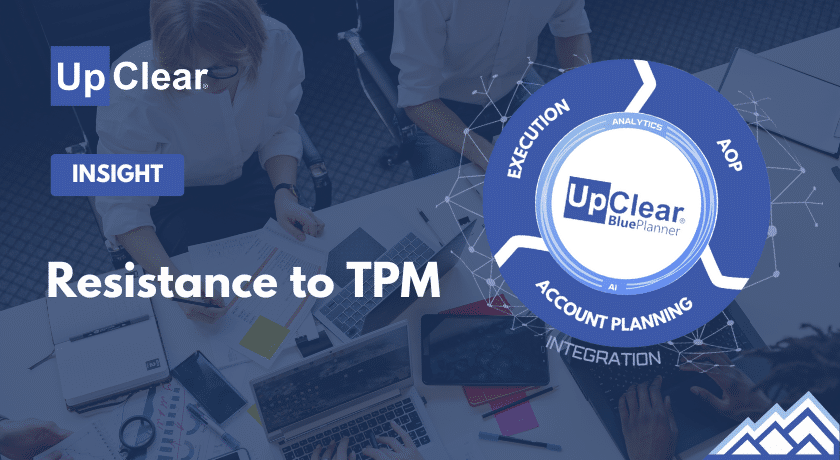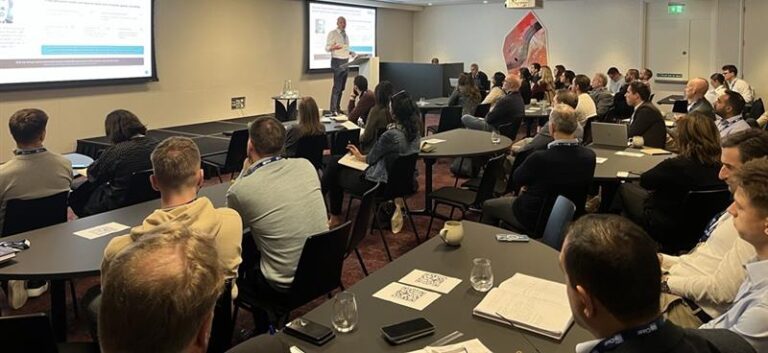
CPG/FMCG companies face mounting pressure to manage trade spend more effectively while driving profitable growth. Yet, many executives remain hesitant to invest in systems built specifically for this purpose: Trade Promotion Management (TPM), Trade Promotion Optimization (TPO), and Revenue Growth Management (RGM). Misalignment across leadership, skepticism about ROI, and resistance from field teams often stall progress.
This whitepaper explores root causes of reluctance and outlines how centralized planning systems—enhanced by AI—deliver rapid ROI, improve cross-functional alignment, and replace inefficient spreadsheet-based processes with scalable, intelligent solutions.
CPG sales, finance, and supply chain leaders want information they can rely on, but some don’t seem willing to make changes- system and human- necessary to get there. There is lament about inaccurate data: after-the-fact “surprises,” wrong dates & performance information, missing information, and slow reporting. These lead to inaccurate forecasts, spending swings & inaccuracy. But users complain that systems are too time consuming, often stating, “I should be spending my time selling.” We believe there’s also a case to be made that some account managers prefer the shortcomings of spreadsheets because it obscures behavior that isn’t desirable. These end user complaints become management objections to adopting technology. Action is not taken to drive the creation of the holistic insights & timely information that facilitate informed decision making.
No matter the industry, evidence is pretty conclusive that systems drive structure, standardization, workflow, and reporting that is not possible nor sustainable in spreadsheets. Given the complexity of the go-to-market process in CPG, not to mention the impact of trade spending on a brand’s P&L, there is overwhelming evidence that TPM platforms facilitate the goals of most CPG leaders: reliable data, cross-functional collaboration, speed, and adequate control of their business.
CPG Brands have different needs at different stages of growth. Early-stage companies with a small team often can manage with spreadsheets. There comes a point in time, however, when sales complexity overtakes the ease of use of spreadsheets. Portfolio, distribution & promotion growth. Transactional growth (orders, deductions). More people involved the process. Still, the needs of a $50M brand and $500M brand are different. Configurable platforms UpClear’s BluePlanner recognize these differences and deliver the solution that meets your needs at your stage of growth.
Implementing a modern Trade Promotion Management solution requires meaningful upfront and ongoing investment—but it is a strategic necessity. Trade spending is one of the largest, least transparent cost centers for a brand. Without a unified, data-driven platform it is nearly impossible for senior leaders to have the visibility they need to improve forecast accuracy, ensure financial accountability, or drive profitable growth. A TPM solution equips brands with the rigor, visibility, and guardrails needed to manage trade as an investment rather than an expense, ultimately strengthening margin, predictability, and decision quality across the business.
Account Managers often resist TPM tools because they dislike administrative work, structure added to processes, and loss of ambiguity. Given the undisputable value of TPM to the CPG industry, however, these objections must be overcome to unlock the real value of disciplined trade management. By integrating data flows, and automating routine tasks, TPM solutions can remove manual effort rather than create it. By using TPM to support decisions rather than just enter data, Account Managers can understand their business better and create better positions when negotiating with customers. When teams adopt the platform, the brand gains clearer visibility into spend, stronger control of deductions, more predictable forecasts, and the ability to reinvest dollars into higher-return promotions. Ultimately, overcoming platform use objections is essential because consistent TPM adoption converts daily tasks into strategic insights that directly protect margin and fuel profitable growth.
We hope it is clear that TPM is a mission-critical business system. Here’s what we think sets UpClear apart from other vendors: Our platform, BluePlanner, delivers the depth, maturity, and configurability that neither platform vendors nor newer entrants can match. Unlike platform vendors that require extensive specification, customization, and high-six-figure price tags just to get started, BluePlanner is a highly configurable SaaS solution refined over nearly 20 years of continuous development—meaning the capabilities CPG teams need are already built, tested, and ready to deploy.
And compared with newer-to-market TPM or Deduction Management vendors our differentiator is true functional depth: software development takes time, and we’ve spent two decades building sophisticated planning, trade management, and settlement capabilities that new vendors simply haven’t had the time or experience to develop.
Our approach allows brands to start simple and evolve into more advanced workflows, rather than making you wait for missing features. This becomes even more important with AI. While others introduce agents that lack meaningful operational systems underneath, UpClear layers AI on top of a platform with real, extensive transactional and analytical capability—ensuring intelligence produces action, not just insights. And throughout the entire process, BluePlanner provides a fully unified AOP, Account Planning, and Execution environment, giving Sales, RGM, Operations & Finance teams one coherent system that reduces complexity, accelerates speed-to-value, and drives profitable growth.
The cost of inaction is high—missed revenue, inaccurate expenses, inefficiencies, and poor visibility. CPG companies that embrace centralized planning systems gain a competitive edge through better decisions, faster execution, and stronger collaboration. Now is the time to move beyond spreadsheets and invest in systems that deliver clarity, control, and confidence.
At UpClear, our mission is to empower Consumer Goods brands to maximize revenue performance and trade investment returns through intelligent, collaborative software—providing a single source of truth, streamlined automation, and actionable insights.
BluePlanner Revenue Management software supports end-to-end processes, from Annual Operating Planning to Account Planning and Execution.


